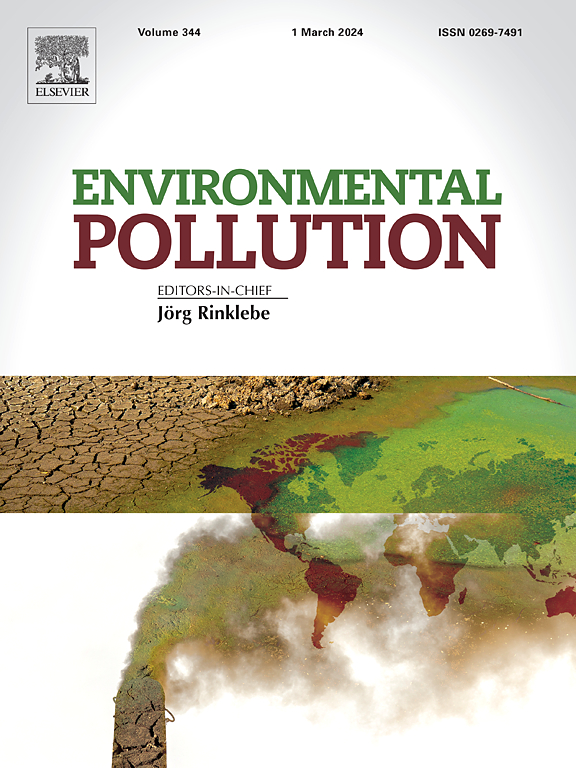Atmospheric microplastics deposition in a central Indian city: Distribution, characteristics and seasonal variations
IF 7.6
2区 环境科学与生态学
Q1 ENVIRONMENTAL SCIENCES
引用次数: 0
Abstract
Atmospheric microplastics (AMPs) transport and deposition in urban areas contribute to microplastics pollution. The present study investigates AMPs deposition, characteristics, potential sources, and the influence of meteorological factors in a central Indian city. AMPs were collected over three land-use types, viz. institutional, commercial, and industrial areas, during four seasons: summer, monsoon, autumn, and winter. The deposition flux of microplastics ranged from 212.53 ± 52.32 to 543.25 ± 71.23 particles/m2/day. The AMPs were predominantly fibres (87.84 %), followed by films (5.43 %), with particle size <1000 μm contributed 43.67 %. The predominant polymer types identified were polyethylene terephthalate (PET, 37.39 %), nylon (20.49 %), and polypropylene (PP, 10.27 %). Higher deposition fluxes were recorded in summer, with 491.06 ± 73.37 particles/m2/day. Correlation analysis revealed a negative correlation between rainfall and AMPs deposition, suggesting a potential cleaning role of rainfall. The estimated annual deposition flux of AMPs in Nagpur city was 3.22 × 1013 particles. Higher AMPs deposition was attributed to plastic waste littering, industrial emissions, and textiles. The estimated mean annual inhalation exposures of AMPs of size 50–250 μm for children and adults were 7375.84 ± 1312.89 and 3738.17 ± 665.39 MPs/kg-bw/year, respectively. The findings of this study contribute to understanding the fate of AMPs and its implications for human exposure. The findings underscore the importance of reducing and managing plastic waste.


求助全文
约1分钟内获得全文
求助全文
来源期刊

Environmental Pollution
环境科学-环境科学
CiteScore
16.00
自引率
6.70%
发文量
2082
审稿时长
2.9 months
期刊介绍:
Environmental Pollution is an international peer-reviewed journal that publishes high-quality research papers and review articles covering all aspects of environmental pollution and its impacts on ecosystems and human health.
Subject areas include, but are not limited to:
• Sources and occurrences of pollutants that are clearly defined and measured in environmental compartments, food and food-related items, and human bodies;
• Interlinks between contaminant exposure and biological, ecological, and human health effects, including those of climate change;
• Contaminants of emerging concerns (including but not limited to antibiotic resistant microorganisms or genes, microplastics/nanoplastics, electronic wastes, light, and noise) and/or their biological, ecological, or human health effects;
• Laboratory and field studies on the remediation/mitigation of environmental pollution via new techniques and with clear links to biological, ecological, or human health effects;
• Modeling of pollution processes, patterns, or trends that is of clear environmental and/or human health interest;
• New techniques that measure and examine environmental occurrences, transport, behavior, and effects of pollutants within the environment or the laboratory, provided that they can be clearly used to address problems within regional or global environmental compartments.
 求助内容:
求助内容: 应助结果提醒方式:
应助结果提醒方式:


